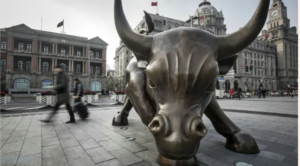Resume af teksten:
Industriproduktionen i eurozonen faldt med 1,2% i august måned-til-måned, efter en stigning på 0,3% i juli, hvilket indikerer økonomiske udfordringer trods øget erhvervstillid. En 9,8% produktionsstigning i Irland løftede eurozonens totale industrioutput; uden Irland ville tallene have været langt mindre imponerende. Produktionen i Tyskland, Italien og Grækenland faldt med over 2%, mens Frankrig og Spanien oplevede mindre fald under 1%. Holland viste en positiv udvikling med en stigning på 2,3%. Optimistiske følelser i industrien stemmer ikke overens med den aktuelle tilbagegang, påvirket af tidligere amerikansk efterspørgsel. Trods store investeringsplaner i eurozonen, forventes kortsigtet økonomisk vækst fortsat at være lav, idet fremstilling sandsynligvis ikke bidrager positivt til BNP-vækst i tredje kvartal.
Fra ING:
Industrial production fell in the eurozone by 1.2% month-on-month in August, following a 0.3% rebound in July. This serves as a warning sign that the economy is not accelerating despite business confidence improving

A surge in production of 9.8% in Ireland lifts the month’s eurozone industrial output – without it, the numbers would have looked far less impressive
Oof. Despite a boost in industry optimism about production in August, according to the PMI, the reality turned out to be much less positive. A big decline in capital and durable consumer goods production caused overall production to tick down to the lowest level since January.
And this was despite a surge in production in Ireland – which is notoriously volatile – of 9.8% month-on-month. Without Ireland, the reading would have been much weaker as Germany, Italy and Greece all posted sizeable declines of more than 2%, while France and Spain posted smaller declines of under 1%. Dutch production was a bright spot among the larger industrial countries, with a 2.3% increase.
Despite optimism among manufacturers returning, the hard data is telling a different story at the moment. After a peak in production related to the US frontloading of European goods, the past few months have shown a declining trend again. Production is still elevated compared to late-2024 levels, but is quickly moving back in that direction.
Sizeable eurozone investment plans will take time to materialise, which means that while optimism about the medium-term outlook for the eurozone industry has become brighter, there is no immediate reason for short-term optimism as trade with the US settles into a new regime. For the third quarter, this means that manufacturing is unlikely to have contributed positively to GDP growth, keeping expectations for growth very muted.
Hurtige nyheder er stadig i beta-fasen, og fejl kan derfor forekomme.



